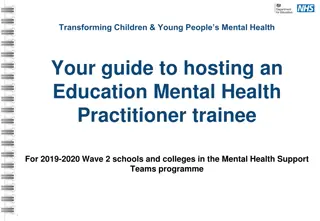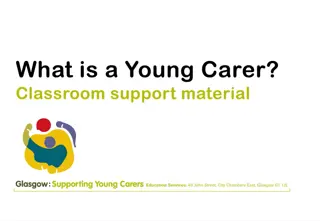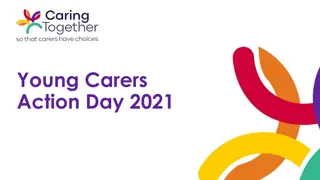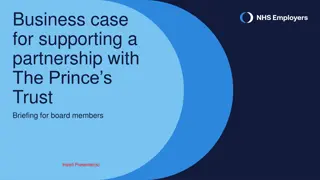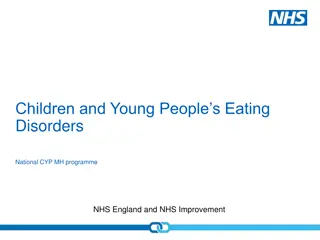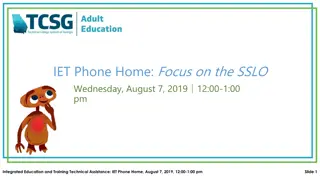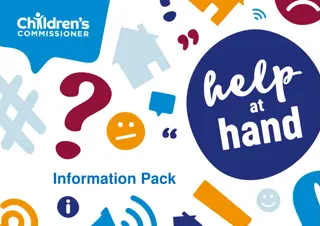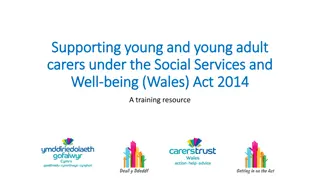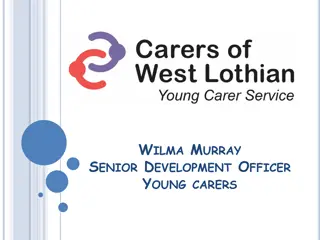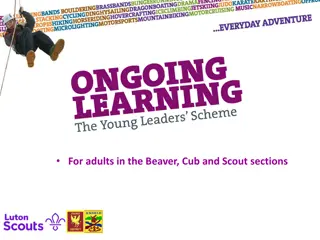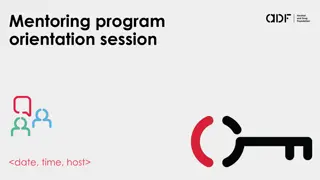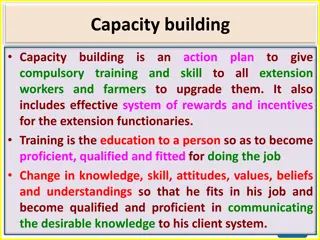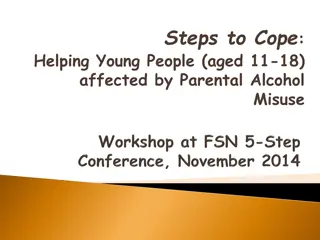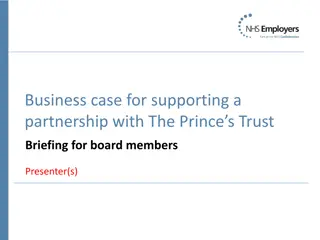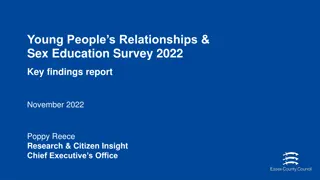Supporting Young People Training Program Overview
this training program focuses on enabling adult volunteers to understand and meet the needs of young people in scouting. It covers typical characteristics of young people, their development, relationships, influences, and creating supportive environments. Sessions include interactive tasks and key messages emphasizing the importance of adapting to the changing needs of young people in scouting. The program also addresses puberty awareness and offers quizzes to enhance knowledge.
Download Presentation

Please find below an Image/Link to download the presentation.
The content on the website is provided AS IS for your information and personal use only. It may not be sold, licensed, or shared on other websites without obtaining consent from the author. Download presentation by click this link. If you encounter any issues during the download, it is possible that the publisher has removed the file from their server.
E N D
Presentation Transcript
Supporting Young People Training Hereford and Worcester
Supporting Young People (14) Who is this training for? This training is part of the Wood Badge for: Section Leaders Assistant Section Leaders It may also be helpful for Section Assistants Adults who completed their Wood Badge many years ago may wish to update their knowledge in this area and will find this training helpful.
Supporting Young People Aim To enable adult volunteers working with young people to understand and meet their needs. Objectives 1) List typical characteristics of young people in your section 2) Recognise ways in which young people develop as they move through Scouting 3) Outline how young people s relationships with their peers and adults typically changes during their development 4) Recognise the influences of culture and society in young people s lives 5) Create a supportive environment for young people, to promote physical and emotional wellbeing and facilitate development. 6) Demonstrate good practice in communicating with young people in your section. 7) Recognise issues that may affect young people and identify sources of support.
Supporting Young People (14) Session 1 Characteristics and Development Objectives: List typical characteristics of young people in your section. Recognise ways in which young people develop as they move through Scouting.
TASK ONE 5 mins In Breakout rooms by Section. Draw a picture (you can do one each or you can delegate somebody to do this) annotated with typical characteristics of a young person in your Section. Be prepared to feed back,
KEY MESSAGE ONE Scouting is designed to meet the changing needs, characteristics and interests of young people.
Puberty? Volunteers in which sections need to have an awareness of puberty?
Adolescence Quiz 1 - What is puberty? a. A stage in life, starting for girls when they begin their period and boys when their voice starts breaking. b. The stage in life where sex hormones are released, the body matures sexually and the reproductive organs become functional. c. A transitional process between childhood and adulthood.
Adolescence Quiz 2 - What is the average age that young people start puberty? a. Girls 9 years, boys 13 years b. Girls 10 years, boys 9 years c. Girls 11 years, boys 12 years
Adolescence Quiz 3 Between what ages do girls usually start puberty? a. 10 14 years b. 8 14 years c. 12 15 years
Adolescence Quiz 4 Between what ages do boys usually start puberty? a. 9 14 years b. 10 14 years c. 12 15 years
Adolescence Quiz 5 The age that girls start puberty has a. Increased b. Decreased c. Remained constant
Adolescence Quiz 6 How long does puberty last? a. It varies b. Around 5 years c. 2 3 years
Adolescence Quiz 7 Mood swings in puberty are: a. A result of bad parenting b. A natural result of the hormonal changes in puberty c. Due to a lack of understanding of puberty
Adolescence Quiz 8 What changes take place in adolescence? a. Physical b. Psychological c. Behavioural d. All of the above
Adolescence Quiz 9 The brain of a young person in adolescence has similarities to the brain of a. An adult b. A toddler c. A 6 year old.
Adolescence Quiz 10 Which of the following are part of changes in the brain in adolescence? a. Difficulty understanding others perspective b. Low mood and depression c. Mood swings d. Reduced capacity for empathy e. Increased capacity for emphathy f. Difficulties with self discipline / control g. High energy levels h. Increased tendency for risk-taking
KEY MESSAGE TWO Each young person is different, but there are common stages of development.
Supporting Young People (14) Session 2 External Influences Objectives: Outline how young peoples relationships with their peers and adults typically change during their development. Recognise the influence of culture and society in young people s lives.
KEY MESSAGE THREE Young people experience many external pressures and anxieties. Your experiences could be very different to what young people experience today.
KEY MESSAGE FOUR We are living in a diverse and multi-cultural society. It is important to be aware of the family circumstances of the young person.
KEY MESSAGE FIVE Adults have a key role to play in supporting and helping prepare young people as they transition between sections.
TASK TWO TASK TWO LOW INFLUENCE HIGH INFLUENCE PARENTS / CARERS FRIENDS / PEERS OLDER YOUNG PEOPLE LEADERS / VOLUNTEERS IN SCOUTING CELEBRITIES
KEY MESSAGE SIX As an adult volunteer in Scouting, you are an influential role model for young people.
KEY MESSAGE SEVEN There must be some consistency in adults behaviour with young people, regardless of age.
Relationships? Discuss the scenario how would you respond if A young leader tells you that she slept with one of the other Explorers in their Unit without using protection.
Relationships? Discuss the scenario how would you respond if One of your Explorers asks you for contraception.
Relationships? Discuss the scenario how would you respond if One of your Cubs tells you they think they might be gay.
Relationships? Discuss the scenario how would you respond if You become aware that one of your Scouts is sexting someone.
Relationships? Discuss the scenario how would you respond if You suspect one of your Explorers might be in an abusive relationship.
KEY MESSAGE EIGHT Young people will be developing their understanding of, and exploring, their sexuality and relationships.
KEY MESSAGE NINE Technology, media and social media have a big influence and part in young people s lives.
Discuss: What are the opportunities of social media? What are the risks? Opportunities Access to information and learning opportunities Sources of support Connecting with people with shared interests Risks Airbrushing of life how people portray their lives on social media Meaning of friendship is a social media friend a real friend? Cyber-bullying 24/7
Digital Lives Quiz 1 How many hours per week do 8-11 year olds spend going online at home or elsewhere outside of school? a. 10.5 hours b. 2.5 hours c. 15 hours
Digital Lives Quiz 2 How many hours per week do 12-15 year olds spend going online at home or elsewhere outside of school? a. 8 hours b. 12 hours c. 17 hours
Digital Lives Quiz 3 How many 15-18 years olds in the UK have met someone in person they originally met through social media a. A third b. 5% c. A half
Digital Lives Quiz 4 What age are Moshi Monsters and Club Penguins particularly designed for? a. 8 12 years b. 10 16 years c. 6 14 years These are multiplayer online games and contain virtual elements.
Digital Lives Quiz 5 What percentage of 15-18 year olds in the UK feel happier online than in real life? a. 10% b. 25% c. 5%
Digital Lives Quiz 6 How many parents of 5-15 years olds who go online are concerned about their child giving out details to inappropriate people. a. A third b. 90% c. A quarter
Digital Lives Quiz 7 At what age can young people join Facebook a. 16 years b. 13 years c. 10 years The age limit for joining Facebook and many other social media such as Twitter, Instagram and Tumblr, is 13 years. However, we know that young people under the age of 13 have social media profiles and that 59% of children have already used a social network by the time they are 10. (The Social Age Study, by knowthenet.org.uk)
KEY MESSAGE TWELVE Technology is a valuable tool, but it is important to empower young people to deal with the risks and dangers.
Supporting Young People (14) Session 3 Creating a supportive environment Objectives: Create a supportive environment for young people, to promote physical or emotional wellbeing and facilitate development Demonstrate good practise in communicating with all young people in your section.
KEY MESSAGE THIRTEEN Take into account young people s basic human needs and rights.
KEY MESSAGE 14 It is important to take a proactive approach in creating a supportive and inclusive environment.
KEY MESSAGE 15 It is important to take action to prevent bullying, and to identify and respond to any incidents effectively.
What do we already do? How do our adults demonstrate the values of Scouting? Belief Cooperation Respect Integrity Care
KEY MESSAGE 16 Adults should lead by example and demonstrate the Values of Scouting in their relationships with other adults and young people.
What do we already do to build empathy and understanding?

 undefined
undefined



